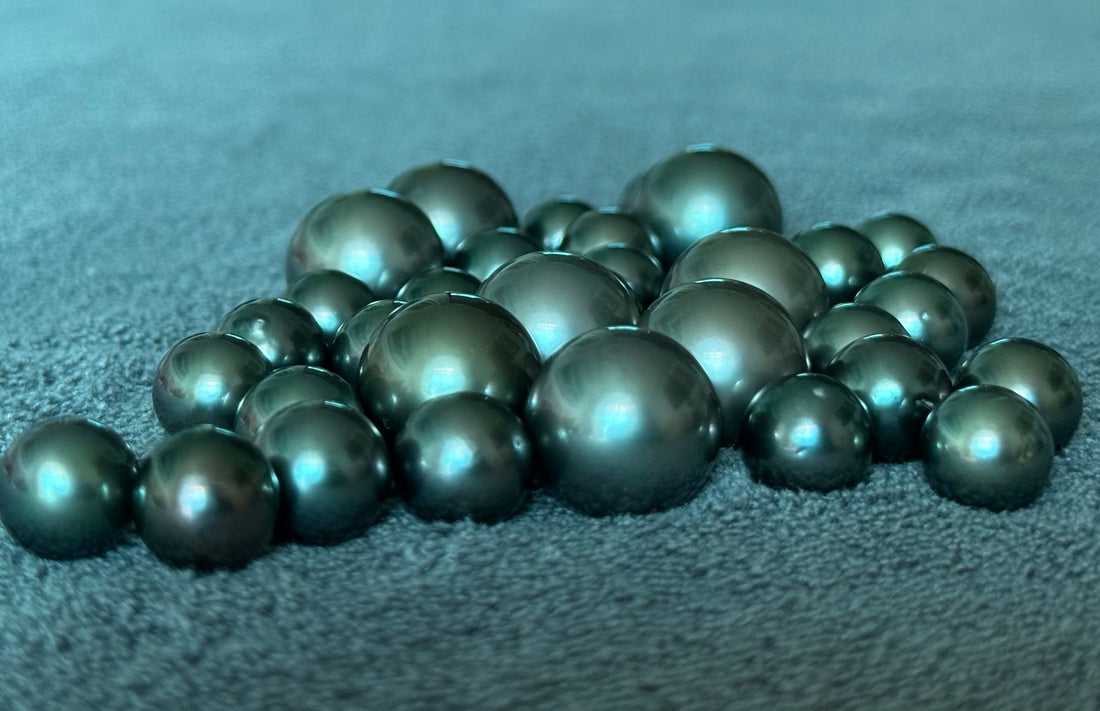For the lover of pearls, their allure lies not just in their luminous glow but in their extraordinary scarcity.
A pearl is a treasure so rare that only one in 10,000 wild mollusks might cradle it—a gem not forged in the earth’s fiery depths, but layered within the soft embrace of a living creature.

This is the pearl, a jewel of such natural elegance that it needs no touch from an artisan to shine.
This marvel has inspired myths, driven scientific quests, and captivated hearts for centuries.
Join us on a journey through the story of pearls—from divine tears to biological wonders—where rarity meets resilience, and adversity transforms into timeless beauty.
Table of Contents
- 1. The Rare Gift of Nature: Why Pearls Are Precious
- 2. Tears of the Gods: Pearls in Myth and Lore
- 3. From Mystery to Mastery: The Science of Pearls
- 4. Pearls in 2025: A Timeless Love Affair
1. The Rare Gift of Nature: Why Pearls Are Precious
Pearls, unlike any other gemstone, are born from life itself, within the mantle of mollusks—oysters, mussels, and clams inhabiting oceans and rivers.
A pearl is formed when an irritant enters the mollusk, triggering its defence mechanism to secrete layers of nacre around the threat. You can learn more in our blog, NEVER PRESENTED BEFORE: A GLOSSARY OF 56 TERMS RELATED TO PEARLS
This organic origin makes them exceptionally rare: only 1 in 10,000 wild oysters produces a natural pearl.
This scarcity fuels their value. In today’s market, natural pearls are so rare that cultured pearls, pioneered by Mikimoto in the 1890s, dominate 99% of production. Yet, for pearl enthusiasts, the natural pearl’s elusive beauty remains a symbol of exclusivity and nature’s artistry.
2. Tears of the Gods: Pearls in Myth and Lore
Before science unravelled their origin, pearls were soaked in myth, their purity inspiring tales of divine origin.
In ancient cultures, they were gifts from gods or mermaids. Poets also wove pearls into narratives of transformation.
Sir Walter Scott, in The Bridal of Triermain, called them “tears by Naiads wept,” linking them to mythical water nymphs:
The pearls that long have slept;
These pearls were tears by Naiads wept

Mythical water nymphs and mermaids, whose tears were believed to become pearls.
Shakespeare, in The Passionate Pilgrim, suggested sorrow could bloom into beauty, writing that “liquid drops of tears… transform’d to orient pearl.”
Another enchanting tale claimed oysters rose from the deep to drink morning dew, which, kissed by sunlight, hardened into pearls.
These stories, though unscientific, imbued pearls with an emotional depth that adds to their romance.
3. From Mystery to Mastery: The Science of Pearls
As curiosity replaced myth, naturalists sought to decode the pearl’s creation. This journey spanned centuries of discovery:

Early scientists and naturalists seeking the truth about pearl formation.
- 1554: Jacques Rondlet proposed pearls were “diseased concretions” in mollusks, a shift from divine to biological explanations.
- 1600: Anselmus de Boot suggested pearls and shells share the same material.
- 18th Century: René Antoine Ferchault de Réaumur confirmed pearls are made of nacre (the shell lining).
- 1761: Carl Linnaeus experimented with artificially inducing pearl formation, foreshadowing cultured pearls.
Today, we understand the process well.
Pearl Formation: A Summary
- An irritant, like a parasite or shell fragment, enters the mollusk.
- As a defense mechanism, the mollusk secretes layers of nacre to coat the irritant.
- Over 3-7 years, thousands of microscopic layers of nacre build up, forming the luminous pearl.

Microscopic layers of nacre forming a natural pearl.
This process, whether natural or cultured, reveals a biological marvel: a defense mechanism that crafts beauty from adversity.
4. Pearls in 2025: A Timeless Love Affair
For pearl lovers, these gems are stories of resilience and elegance. The global pearl jewellery market, valued at nearly $23 billion in 2025, is projected to grow significantly, proving their timeless appeal.
Freshwater pearls dominate minimalist designs, while rare South Sea and Tahitian pearls command the luxury market.

14mm AAAA South Sea Golden Pearls: House of Totapari Jewellery
In 2025, fashion celebrates pearls’ versatility. Brands from Bottega Veneta to Chloé showcase baroque shapes, blending vintage charm with modern flair.
For collectors, choosing pearls means seeking radiant luster and unique shapes, with brands like Mikimoto and Tiffany & Co. offering timeless pieces that elevate any collection.
Conclusion: The Pearl’s Enduring Lesson
From ancient myths of divine tears to the scientific revelation of nacre’s artistry, the pearl’s journey is one of rarity and transformation.
For pearl lovers, each gem is a testament to resilience, a rare treasure born against the odds.
In a world of fleeting trends, pearls remain eternal—proof that beauty can emerge from life’s challenges.

A Strand of Pink Freshwater Pearls- 14mm
Share your favourite pearl story in the comments below, or explore collections at Totapari to find your own piece of nature’s miracle.




